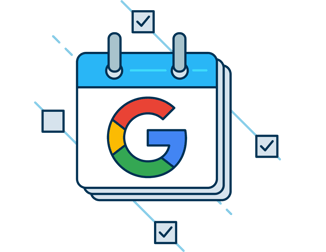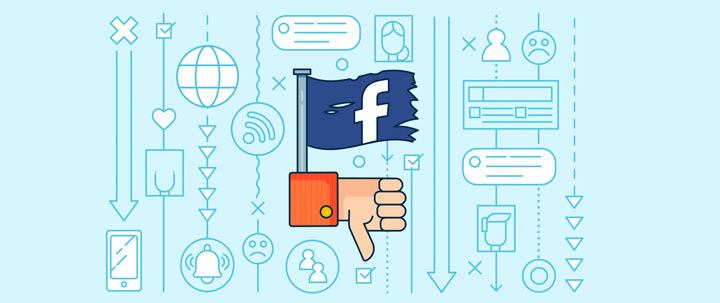By Carrie Dagenhard (Tech Writer)
Marketing Cookies are Crumbling. This is a monumental shift that's reshaping digital marketing and the way customer data is used.
After almost thirty years as the primary choice for tracking user data across the web, marketing cookies are officially over. Of course, you’d be hard-pressed to find a marketer or tech pro who’s shocked by this news — the death of the cookie was inevitable from the day GDPR became law. Plus, consumers have overwhelmingly turned to mobile browsing (which isn’t an ideal environment for tracking via cookies) and begun adopting stricter ad blockers.
What isn’t yet clear, though, is what’s next for data tracking and user privacy — or what will ultimately replace marketing cookies in this next era of online advertising.
Let's explore what the future might look like and what tech pros should know about life after the crumbling cookie.
What Are Cookies and How Do They Work?
Cookies first emerged nearly three decades ago, shortly after a man named Lou Montulli developed Lynx, one of the first web browsers (which eventually became Netscape), as well as HTTP proxying and so-called “magic cookies.” Initially, Montulli’s cookies were used to verify whether a user had previously visited the Netscape site and so websites could “remember” users’ preferences to improve their experience.
In many cases, cookies were used for innocuous things, like counting the number of visitors to a website. But users were suspicious of cookies as soon as they became aware of their existence. They found the idea that marketers can piece together a users’ browsing activity, preferences, and purchases unsettling. Though to be fair, most organizations used this insight to ensure they were serving the most relevant ads and content to their visitors— not to snoop on individuals.
Cookies always claimed their innocence and denied being the "cookie monsters" that privacy advocates claimed they were.
There were also slightly sketchier situations, like in 2012 when it was discovered that Google had found a way to bypass an Apple Safari setting that blocked third-party marketing cookies ( costing Google $22.5 million in a settlement).
Then came multiple rounds of EU legislation, including a 2011 law that required websites to tell each visitor about their cookie practices and gain their consent. (Hence the pop-ups that began appearing every time you landed on a new site.) The rise of mobile browsing and GDPR, though, struck the final nail in the cookie coffin.
Why Are Cookies Being Phased Out?
Despite the struggles, cookies persisted. Then, earlier this year, Apple released an update to its mobile operating system — iOS 14.5 — which ended automatic opt-in for online tracking and data collection. (This is why, suddenly, every time you opened an app, you were greeted with a prompt asking for your permission to track your activity.) By allowing users more control over who had access to their data and providing greater transparency into data collection practices, Apple effectively changed the game.

Firefox and Safari blocked tracking cookies as a default, and Google also announced that, as of late 2023, it would also block third-party tracking cookies. The search giant also said it would not replace cookies with new individual user tracking.
In other words, the tech world has spoken: there’s no point in using cookies anymore.
What’s Next for Tracking and Privacy?
The end of cookies is forcing marketers to rethink the way they target campaigns through the customer journey. After all, consumers have grown accustomed to highly personalized and ultra-targeted experiences. The ads we’re served are often creepily relevant. But remember: Google still has a wealth of its own data — and it runs the largest PPC ad platform on the web. So its customers and ad platform partners will still have access to plenty of data.
 “This is a no-brainer for Google, as they have a wealth of first-party data, or data it collects from users directly, to target ads on its own publishing platforms,” says Owen Ray, senior content marketing manager for Invoca. “This is great within the walled gardens of Google, but other publishers may feel left high and dry by this solution.”
“This is a no-brainer for Google, as they have a wealth of first-party data, or data it collects from users directly, to target ads on its own publishing platforms,” says Owen Ray, senior content marketing manager for Invoca. “This is great within the walled gardens of Google, but other publishers may feel left high and dry by this solution.”
But, outside of Google’s ad network, marketers will need to end their reliance on third-party data once and for all.
“First-party, privacy-friendly datasets are richer and more impactful when it comes to improving campaign performance,” Ray says. “They also stand the test of time while strengthening the trust between the customer and the business, and who doesn’t want that?”
But, the thing is, marketing cookies were never perfect. Even before browsers began rejecting them, it was rarely easy to piece together a perfect story using only cookies. That’s why many marketers have already moved on to other methods:
First-Party Data: Instead of buying third-party data (which isn’t always relevant or trustworthy anyway), many marketers are now going all-in on first-party. (i.e., The data organizations collect directly from their audiences through data capture forms, social media, email marketing, and more.) This data is typically more relevant and, because customers are willingly letting you in, it can mean your campaigns will be better received too.
Content & Contextual Ads: Remember when keywords were everything, and ads were related to the content you were browsing in the moment rather than something you searched yesterday? We’re partying like it’s 2009 again, my friends. Keyword targeting is back — only now (thankfully) the caliber of content is much better. Content marketers know that to engage audiences, they have to create assets with legitimate value.
And while marketers were quick to abandon contextual advertising in favor of re-targeting, many are coming back around on the idea. (If nothing else, it’s much less creepy.)
People-Based Advertising: This is a method of tracking based on a piece of unique identifying data instead of a user’s device — like a login. (Most people remain consistently logged in to Facebook or Amazon across their mobile and desktop, for example.) This works for the aforementioned tech giants but can be extremely difficult for smaller organizations.
Looking Ahead To A Post Cookie World
While marketing cookies are on the way out, marketers still have plenty of options for capturing and using data to target audiences. The catch is, today people are much more protective of their privacy and more willing to reject organizations that fail to respect that privacy. And, as we move forward, tech pros must strive to keep organizations honest and ethical in their data collecting practices.



%201.png?width=559&height=559&name=close-up-women-working-with-devices%20(1)%201.png)








